Here’s something about the South Pole that people rarely talk about: penguins smell.
No, it is not easy to rid your senses of their colourful scent once you’ve been in their company. But yes, their adorable tuxedo-striped feathers, flappy wings and precious waddles will draw out every “aww!” you have left in you regardless.
Such is Antarctica, a land where wonder overrides every other emotion. With piercing white glaciers, translucent blue waters, pure-as-earth air, and majestic wildlife, it is a place that is hard to believe exists. For those who have seen and felt its greatness themselves, it is impossible to forget. Shaheda Mehdi, 56, and Manjula Garuda, 55, are two such valiant women who recently journeyed from Visakhapatnam to the Earth’s last continent. Now, they sit down with Yo! Vizag to tell their glorious tale. Though separated from the dazzling icy wilderness by roughly 11,467 kilometers, warmth seeps into every word they say about their adventure, proving that distance makes the heart grow fonder!
“How did this duo end up in Antarctica to begin with?” one might wonder. The true answer to that perhaps lies in their 25-year-old friendship founded in a love for fitness and travel. “I used to be a Reebok-certified fitness trainer, and she was one of my students,” recalls Shaheda. “That’s how our journey began.” Ever since, fitness has been the heartbeat of their relationship, binding them through shared goals and physical pursuits. “It’s been a huge part of who we are. Even now, we prefer to catch-up over a walk or a workout,” adds Manjula. The pair like to connect through meaningful conversations about life, goals, and the next challenge ahead. A relationship as enduring as theirs also means that they respect each other’s space, which has kept their bond strong.
When asked about their shared fitness routine, their response has us raising our brows in utter awe. “We go cycling at dawn, 3:15 am in the summer to dodge the heat, covering around 30 kilometers. In winter, we start a bit later, around 3:45 am, sometimes riding up to 40 or 50 kilometers. If we feel like talking, we’ll take a walk instead!”
Apart from a clear passion for physical activity, Shaheda and Manjula also share the gift of feeling at home in far-flung corners of the world—from the Himalayan peaks and Bhutan to the Maldives and the United States, they’ve been everywhere! It’s safe to say that they don’t just enjoy a challenge; they seek it out.
And so, when the coldest, driest, iciest, and windiest challenge beckoned, they welcomed it with open arms.
The Voyage
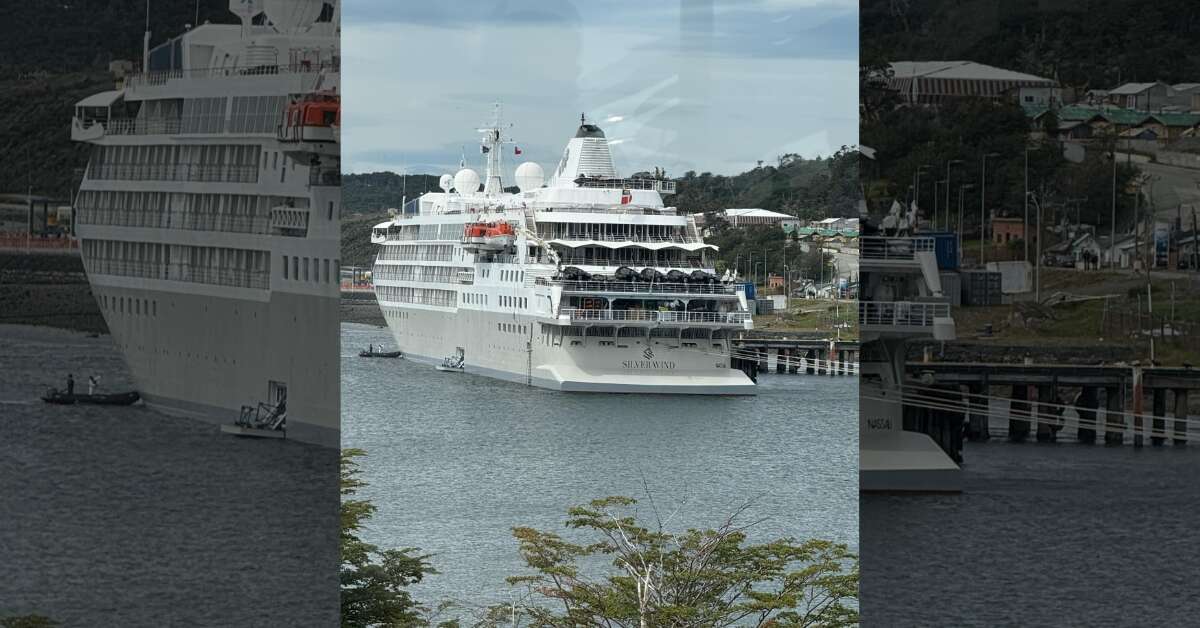
“Antarctica had been on our bucket list for a long time, but it was only a year ago that everything aligned for the trip,” explains Shaheda. “Our journey started in Santiago, Chile. From there, we took a six-hour flight to Punta Arenas, followed by another flight to Puerto Williams, the southernmost inhabited town in the world.” At Puerto Williams, on 5 January 2025, the pair boarded the Silver Wind, a 236-passenger expedition ship designed for the wild.
As the ship eased through the Beagle Channel—flanked by jagged cliffs and distant peaks—wildlife appeared almost instantly. “It was summer, migration season,” Shaheda explains. “Whales were everywhere.” Humpback whales, often solitary or in pairs, surfaced with their curved backs and dolphin-like grace. Orcas, traveling in pods, flashed black-and-white patterns.
At the first sighting of a whale, Manjula laughingly recalls that she bolted from the bathroom in just her bathrobe! “Our first humpback! It was right outside our balcony.” she grins. “After that, we calmed down, and would watch whales from bed itself.”
Peaceful waters soon turned turbulent as the ship entered the Drake Passage, a 600-mile stretch between South America and Antarctica, which is infamous for its strong currents. “Most merchant ships dodge it,” Shaheda says. “Some cruises even add eight days to avoid and go around it, but we wanted the full experience.” And they got it! Waves soared six to seven meters, some crashing against their seventh-floor balcony.
“The first time we saw our balcony wet, we thought it rained,” Manjula adds. “Then, we realized it was the sea! We stood out there, feeling the spray. It was wild!”
Inside, the ship rocked. The ship was ready with foam padding on railings and elevator walls for safety. In the dining room, bottles and utensils lay flat, taped down and secured. “We got a few bruises while traversing the Drake Passage,” Manjula admits. “One night, we almost fell off our beds, but it was worth it!”
Like the calm after a storm, the end of the Drake brought with it some of nature’s finest wonders. “We got to observe a rare sight: Albatrosses flying over the waves, right from our balcony,” Shaheda exclaims. “Three-meter wingspans, gliding in figure-eights. It was unreal.”
Adding to the show was a pod of orcas as well. As they paraded by, the ship turned off its engine and fell hush, letting them pass undisturbed. The Drake Passage took two days, and by 7th January, the ship made it to the Antarctic peninsula. “That’s when it really began,” Shaheda smiles, an excited glint in her eye.
One Small Step in Antarctica, One Giant Leap for Adventure!
Silver Wind’s first landing was at Hunt Island, where Shaheda and Manjula took their first steps on the Antarctic Peninsula. Here, they met some friendly animal residents that soon became constants throughout their trip: Penguins!
“Hunt Island had Gentoo and Adélie penguins. Gentoos, with their orange beaks and orange underwings, nested at the mountain’s base, while Adélies, black and white, claimed higher ground. It was breeding season, and the island was teeming with nests, eggs, and freshly hatched chicks.”
Penguin colonies, with their constant cycle of eating, defecating, and procreating, certainly made for a memorably pungent first day. “The first day, the smell was overwhelming,” Manjula admits. “Even after showering, it lingered. But by day two, we didn’t notice it anymore.”
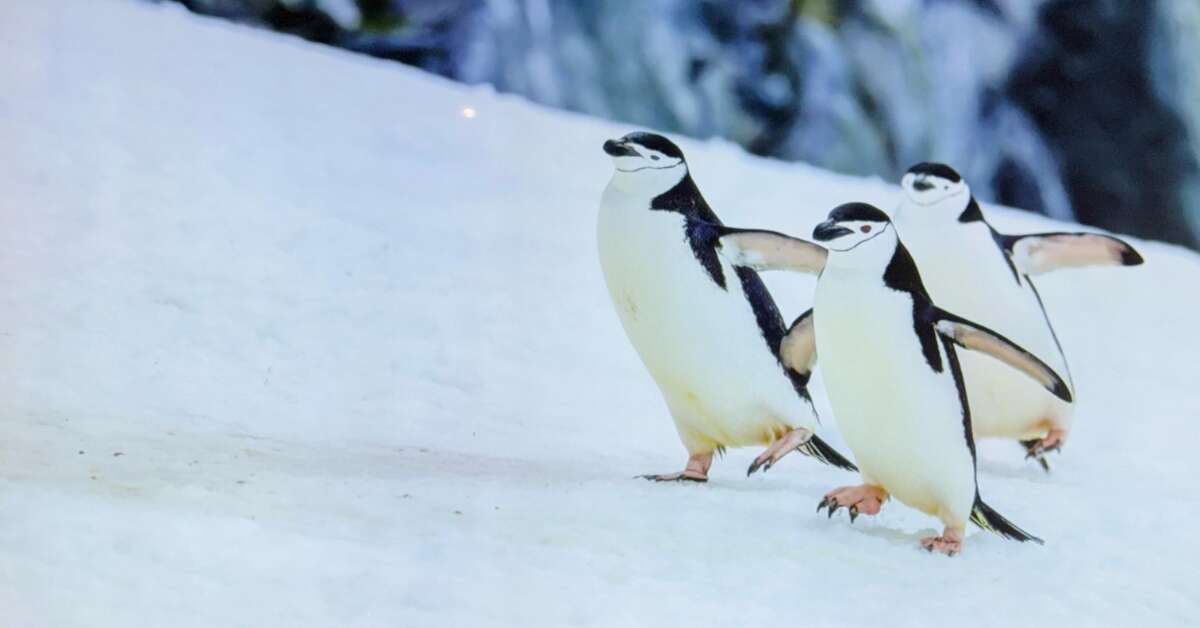
Life Aboard the Silver Wind
The Silver Wind is an expedition vessel. With 236 passengers and a crew of 226, it hosted a floating community of adventurers, guided by an expedition team of geologists, marine biologists, and seasoned explorers. Over the course of 10 days, no two were ever the same. “Our journey is a blank canvas,” Michael, one of their expedition leaders, would say. Their landings hinged on the weather.
“We ourselves don’t follow standard itineraries or join guided tours on our regular trips. So being accompanied by fellow travellers who are just as adventurous and spontaneous was great,” remarks Shaheda.
In Antarctica, ships use Zodiac boats (purpose-built inflatable tenders) to transport passengers and crew from the ship to shore for excursions. This is useful as Antarctica has thousands of islands that an expedition ship of this size cannot easily navigate. Each landing begins with reconnaissance—a “rekke,” as the crew calls it—to ensure safety. Passengers are split into groups, and before departing, they start layering up with dry-fit base layers, parkas, insulated boots, and life jackets so heavy (five to seven kilograms) that wearing them itself was a workout!
“This is where fitness is key,” Shaheda says. “Our heads, neck, shoulders, and spine had to endure a lot of movement and weight for as long as three hours. One might want to give up just putting them on!”
At every landing, travellers’ boots are disinfected to prevent the spread of bird flu in and out of Antarctica. “Boots were scrubbed on rollers and dipped in chemical solutions. You don’t track the outside in,” Manjula explains.
Once on Antarctic ground, there are strict rules—no touching, sitting, feeding, or picking up anything, not even snow.
“A reality-check when it comes to Antarctica is that you need to be prepared for an emergency at all times,” added Shaheda. “If there is a change in weather while you’re on an excursion, say, a blizzard or snowstorm, you might have to ride it out on the zodiacs for eight hours!”
The Uncharted Itinerary
Many of the stops made on Shaheda and Manjula’s trip with the Silver Wind were impromptu, and only possible thanks to the courage and zest for exploration displayed by the expedition leaders and passengers. Venturing into the southern end of the peninsula, the group veered into “The Iceberg Graveyard.”
“This was a highlight! We saw icebergs shaped like diamonds, arches, masks, and other fascinating shapes that just seemed…surreal. It was like an artist’s gallery!” Shaheda marvels. The electric blue waves, sloshing against the snowy white icebergs was a sight fit for a dream.
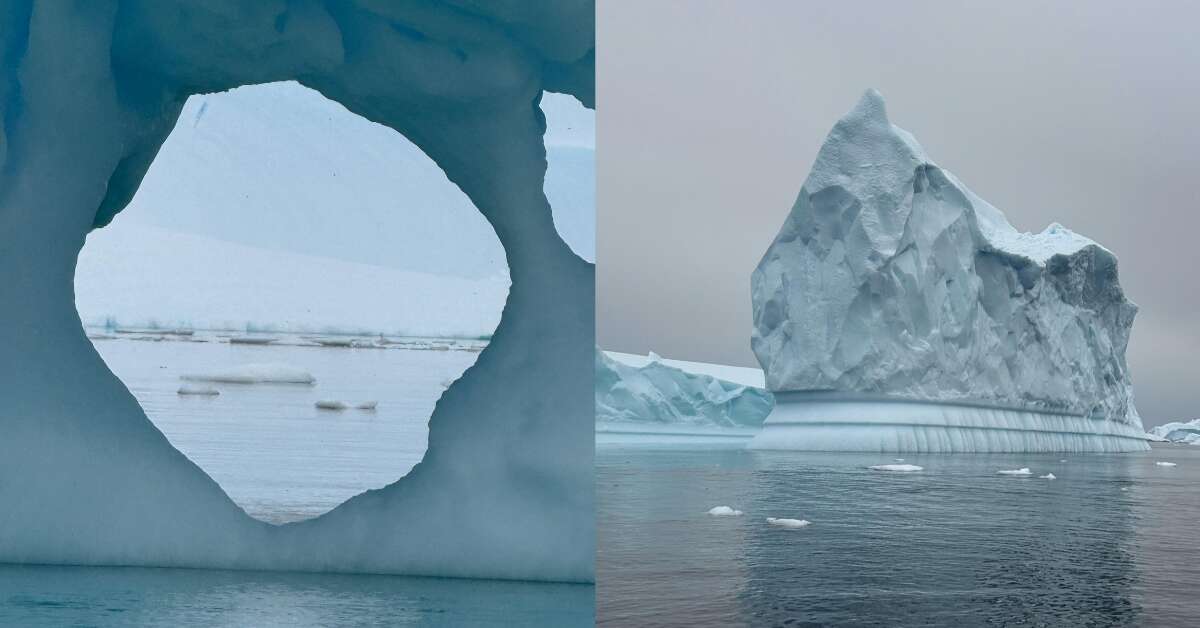
“Another gem we braved into was a caldera called Deception Island or Whaler’s Bay,” adds Manjula. A caldera is a large depression formed upon the eruption of a volcano, and Whaler’s Bay is ringed by active volcanoes. “As volcanoes erupt, the entrance to this caldera is getting smaller, but we managed to get through, and I’m so glad we did!” Home to a buried Chile research station, the caldera showcased stunning rocks in vivid greens, oranges, reds, and blacks. “With the still blue water and the colourful rocks, it felt like we were in Thailand!”
Their next conquest was the Lemaire Channel, a narrow passage flanked by huge icebergs, which tested the ship’s ice-class hull. “It’s frozen most of the year,” Shaheda explains. “But we were able to push through.”
Another beloved stop was Portal Point, where the pair conquered a three-kilometer trek across a snow-covered mountain. “The snow was so compact that one of my poles got stuck and broke,” recalls Shaheda. But their trekking companions, charming little Chinstrap penguins waddling alongside, made it easier. “They were the naughtiest penguins we met. They followed us; and as I walked, they walked. When I fell, so did they. And when I gave them a curious look they matched my energy, returning it!” Manjula says, grinning.
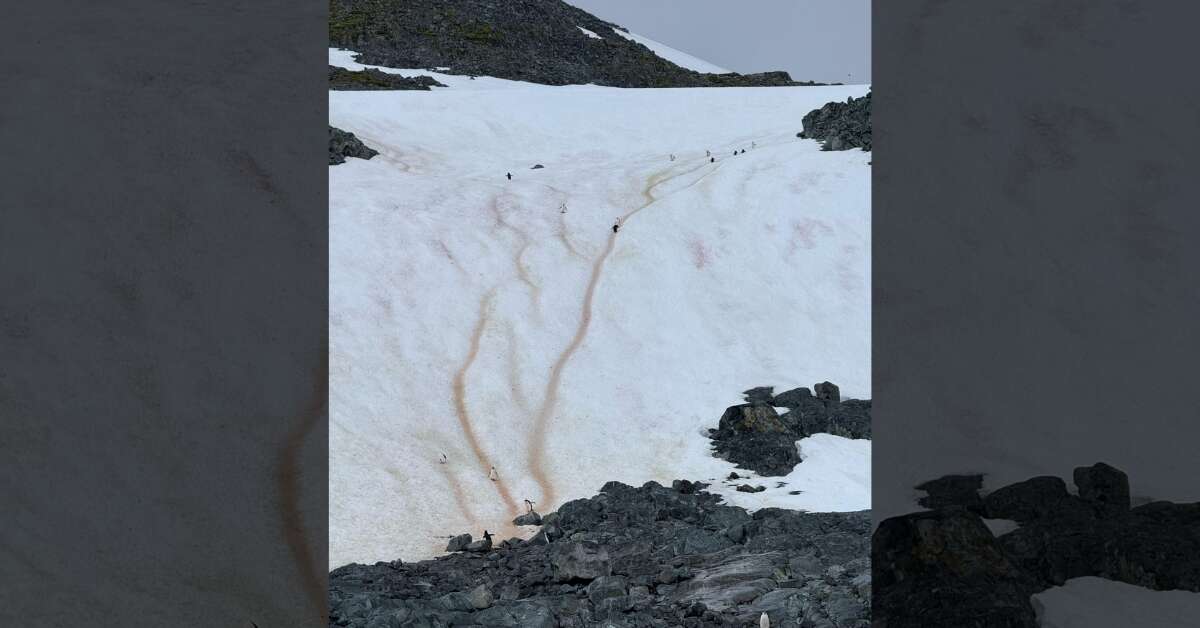
Antarctic Antics!
Life in Antarctica was busy as it was fun. There were two excursions daily, and between them, there was food to eat, people to mingle with, fun activities to do, and a hot jacuzzi to unwind in. The days were long, with the sun setting at around 11:00 pm, and evenings were spent going over presentations by the expedition leaders explaining their daily encounters during the trip. One night, a team member’s frozen boogers made a cameo in the slideshow, sparking laughter.
On another day, while out on sea en route to an excursion, Shaheda and Manjula heard music! Lo and behold – a party zodiac greeted them, delivering hot chocolate, champagne, and a solid beat! And there, in a place far, far away from stock markets, AI revolutions, and all the other noise of the world, they danced, cheered, and raised a toast to the white Utopia that surrounded them.
The Polar Plunge was their final triumph. At minus seven degrees Celsius, Shaheda and Manjula took a deep breath, got into position, and leapt right into the frigid sea, synchronized by instinct. “The shock was therapeutic,” Manjula shudders at the memory. “I opened my eyes underwater—it was so clear. It is a moment I’ll never forget.”
Fitness as the Bedrock
“It would be fair to say that this trip wouldn’t have been possible if we weren’t in good health,” Shaheda emphasises. From carrying heavy gear to persevering through the cold temperatures and trekking in the snow, fitness undoubtedly plays an important part in vigorous journeys like Antarctica.
“As we grow older, it is necessary to prove to ourselves that age is just a number. stepping out of your comfort zone is always enriching. It doesn’t have to be an extreme expedition like Antarctica; it could be as simple as a nature walk or a short trek. The more you explore, the more you grow. Fitness helps with that because you’re not limited—you can trek, climb, and experience things fully. Age doesn’t have to be a barrier to living a full life,” Shaheda advises.
She also mentions that muscles tend to deteriorate the older we grow, so focusing on strength training and functional training is a good way to keep oneself in good health.
A Journey’s End, A Dream Fulfilled
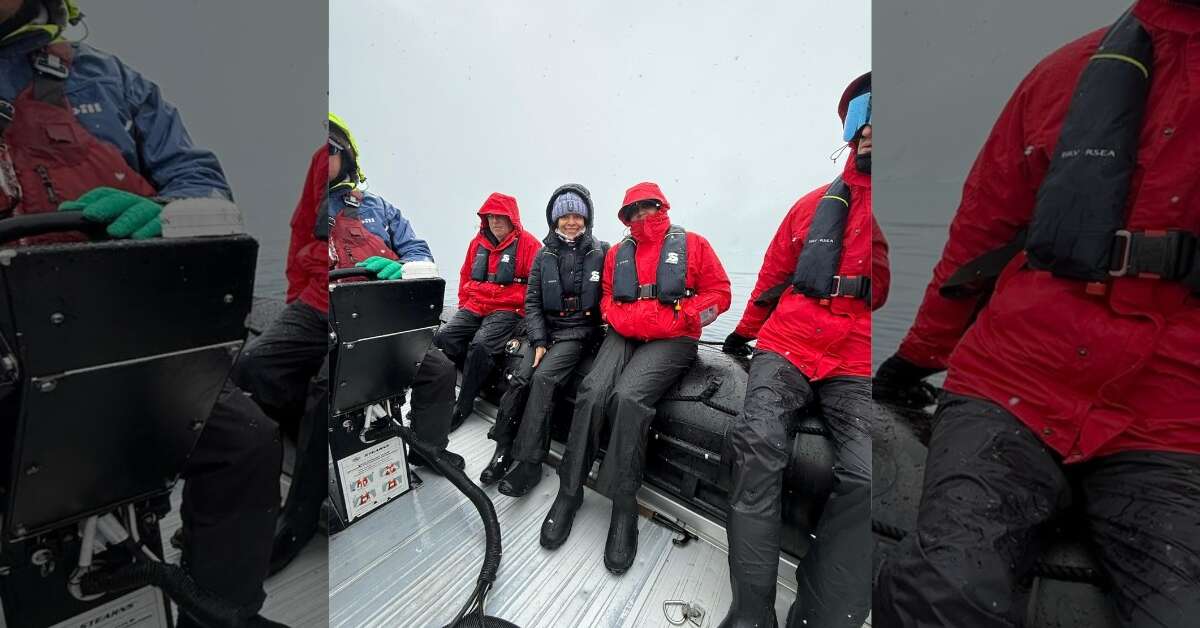
“I’ve now set foot on all seven continents,” Manjula says, her face bursting into a happy smile. “Even now, when I think about it, it feels fresh, like a dream. Many people might have the ability to do this but don’t take the leap. We did, and that sense of achievement is unparalleled. I don’t feel like I need anything more in life.”
Shaheda agrees, echoing that Antarctica marks a new chapter for her. “I’m in a phase now where I want to create memories rather than chase material things,” she reflects. “Every stage of my life needs to be tied to an experience, a meaningful connection, or a journey. Antarctica was just that. It was a soul-stirring journey—mentally and physically freeing. Experiencing new wildlife was a rush. I feel like my heart is now open. What I desired, I got.”
Above anything, the support they received from their families was a big reason for their trip’s success, say both. “It’s incredibly humbling to realize how much effort our families put into ensuring we had the best experience. Everything went smoothly. Our husbands were there every step of the way, calling to check in on us, coordinating with the expedition operators, and most importantly, having a much-needed meal of Dal and rice ready for us when we got home!”
After our exhilarating conversation with Shaheda and Manjula, we couldn’t help but think that Antarctica is no bedtime story. In fact, so absorbing is its lore that it’ll keep you awake, dreaming. But when you do go to sleep, it’ll be with the comfort of knowing there are places out there that are beyond words, places that are larger than life itself, magnificent enough to make you wonder, “Am I really alive at the same time as this?”
Stay tuned to Yo! Vizag website and Instagram for more city and news updates.









Discussion about this post